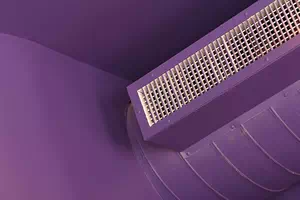Overview
Relevant Activities
Role of Local Governments
U.S. EPA Resources
Other Resources
States
Other Federal Agencies & Programs
Associations for Local Officials
Funding & Financing
Indoor pollution sources that release gases or particles into the air are the primary cause of indoor air quality problems in homes, schools and other public/private buildings. Concerns about indoor air quality (IAQ) increased when energy conservation measures, instituted in office buildings during the 1970s, minimized the introduction of outside air and contributed to the buildup of indoor air contaminants. Inadequate ventilation can increase indoor pollutant levels by not bringing in enough outdoor air to dilute emissions from indoor sources and by not carrying indoor air pollutants out of the home. High temperature and humidity levels can also increase concentrations of some pollutants.
The U.S. Environmental Protection Agency (EPA) and its Science Advisory Board have consistently ranked indoor air pollution among the top five environmental risks to public health. Studies of human exposure to air pollutants indicate that indoor air levels of many pollutants may be two to five times, and occasionally more than one hundred times higher, than outdoor pollutant levels. Children are even more vulnerable to pollutants because they breathe a greater volume of air relative to their body weight and they are not able to process toxins as well as adults.
- Vehicle & Equipment Maintenance
- Building Maintenance, Renovation, and Construction
- Transportation Planning, Operation, and Management
Local governments play an important role in reducing indoor air pollution by educating communities about air quality issues and participating in air quality improvement programs or initiatives.
U.S. Environmental Protection Agency Resources
- Indoor Air Quality. Learn about the importance of good indoor air quality.
- Indoor Air Quality in Homes/Residences. Learn how to protect IAQ in residences, including energy remodeling and other projects.
- IAQ in Large Buildings. This site is a gateway to EPA programs that improve the environmental impacts of building and development, such as Energy Star, Water Efficiency, and Environmentally Preferable Purchasing.
- EPA List of IAQ Publications. A long list of IAQ publications available from EPA.
- Clean Air in Buildings Challenge. This document provides basic principles and general actions recommended to improve IAQ in buildings.
- IAQ Tools for Schools Program. EPA developed the IAQ Tools for Schools (TfS) Program to reduce exposures to indoor environmental contaminants in schools through the voluntary adoption of sound indoor air quality management practices.
- American Lung Association. Provides information about indoor air pollutants and sources.
- Environmental Law Institute Indoor Environments Program. Provides a database of state IAQ programs and publications on IAQ topics.
-
State and Regional Indoor Environments Contact Information Contact and program information categorized by state or region.
Other Federal Agencies & Programs
-
OSHA Indoor Air Quality. OSHA IAQ main page contains links to applicable standards, hazard recognition resources, and more.
Associations for Local Officials
-
Indoor Air Quality Association. A nonprofit, multi-disciplined organization, dedicated to promoting the exchange of indoor environmental information, through education and research.
For more information on funding and financing programs and options for indoor air, please see the Indoor Air section of LGEAN's Funding & Financing page.



